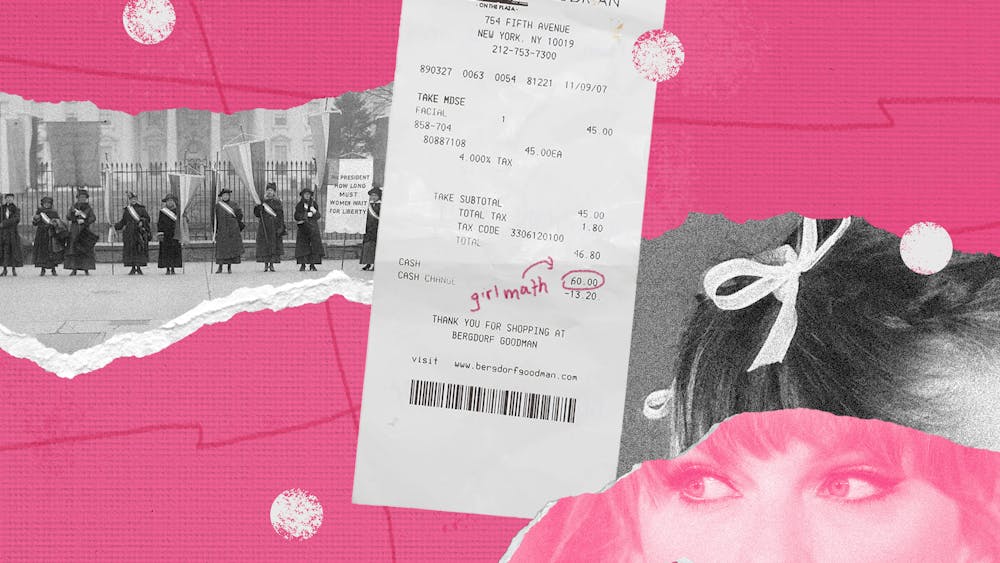That girl, clean girl, tomato girl, coastal cowgirl, hot girl walks. We’re living in the era of girl–ification. As YouTuber Mina Le points out, “Girls are girling, hot girls are walking, girls are blogging. Dinner is girl, 40–year–old men are baby girls. We are in a girl economy.” But, what are the repercussions of this incessant gendering of all things pop culture?
It has become increasingly evident that many of those coining these girl–ified terms aren’t actually girls at all. In fact, a vast majority of them are adult women. In her article, “What Does It Mean When We Call Women Girls?”, Robin Wasserman writes that women define themselves as girls to hold onto an identity that they feel will disappear as they age. After all, it seems inevitable that women lose a piece of their identities when they become wives and mothers. Society’s affinity to the infantilization of women equates the concept of womanhood to a gateway to sadness.
Many girl–ification social media trends originated as harmless jokes. “Girl dinner,” for instance, was first shared by TikTok user Olivia Maher as a way to show how different her dinners looked when her boyfriend wasn’t home. Girl dinner exploded across social media platforms, with women and girls all over the world showing off their hodge–podge meal combinations, from cheese and crackers to hummus and pita. At first, this trend was seen as an act of liberation from a woman’s responsibility to cook elaborate, hearty meals for their husbands and children. Yet, aren’t girl dinners just putting a Band-Aid on a bullet hole? The trend may have given women temporary moments of freedom from gender norms, but they fail to address the root of the issue: the patriarchy. When dinner time ends, won’t these women go back to their society–assigned roles?
Additionally, many of these trends targeted at women and girls feed into diet culture. Some women have used girl dinner to show off how small their meals are, replacing proteins and vegetables with Diet Cokes and chocolate bars. This approach to the trend glamorizes the idea of women eating less, thus promoting disordered eating behaviors. This can be especially dangerous for impressionable young people, as they aspire to embody their favorite influencers. Additionally, girl dinner enforces gender differences in eating patterns by implying that more substantial foods, like hamburgers or steak, are inherently un–womanlike. This ignores the fact that everyone, regardless of their gender, should have bread and butter at dinner from time to time.
Another girl–ified social media trend is the infamous concept of “girl math.” With girl math, social media users (primarily women and girls) rationalize their spending habits, despite not being mathematically true. According to girl math, anything under $5 is basically free, and returning an item you bought gains “free money.” However, this trend insinuates that math concepts inherent to women and girls are neither intellectual nor practical. Girl math reinforces the sexist “bimbo” stereotype that women simply can’t be both beautiful and brainy. Additionally, girl math pushes the narrative that women are frivolous and financially irresponsible shopaholics.
60 percent of TikTok users are young boys and girls. If they’re overexposed to gendered language from an early age, the effects can be disastrous. By popularizing the concept of girl dinner, young girls will consider replacing nutritious and filling meals with glorified snack plates. Girl math will cement in young boys' and girls’ minds that gender determines one’s academic abilities. When children are raised by misogynistic gender schemas, they are likely to subscribe to those stereotypes, fuelling a never–ending cycle of gender inequality.
The girl–ification of TikTok was not meant to hurt anybody. Yet, as these trends have exploded in popularity, they have also evolved into a bigger discussion of gender norms and insurmountable societal expectations for women and girls. Language is a powerful tool, especially when it comes to subliminally propagating sexism. When we start defining certain professions or activities by gender, it creates a “standard” and an “other.” The terms "lady doctors" and "female pilots" of the last century, for instance, implied that doctors and pilots were inherently men. Women in these occupations were deemed unusual cases that constituted their own separate terms. Girl–ification trends associate basic human functions, like eating and body movement, with gender–based concepts.
Women and girls have spent decades working tirelessly to overcome misogyny in the workplace, voting booths, and university classrooms. In the perpetual fight for gender equality, it is crucial that we continue to move forward instead of taking steps backwards. Reverting girl dinners back to midday snacks is the perfect place to start.

